Want to celebrate this New Year celebration the traditional Japanese way? One of the best ways is to enjoy Hatsumode, the first visit to a shrine or a temple to make a prayer for the new year. Let’s take a look at exactly what is Hatsumode, the origin and the best shrines and temples to go for Hatsumode in Tokyo!
What is Hatsumode?
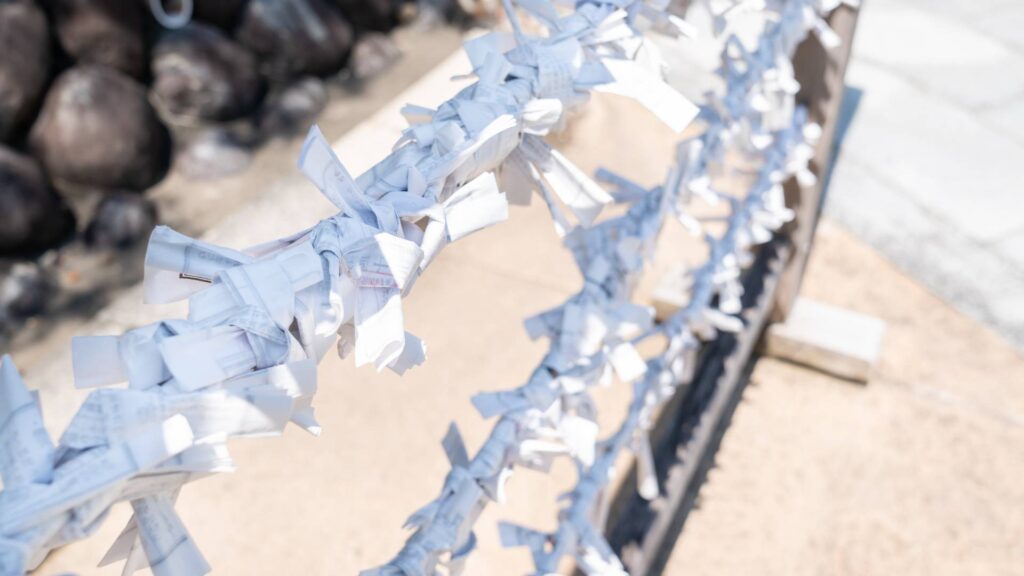
Hatsumode is an activity that Japanese people do at the beginning of the new year, where people go to shrines and make their first prayers of the year. It’s believed that the first wish made in the year will come true.
Origin of Hatsumode

Hatsumode is said to have its roots in the custom of Toshigomori, which dates back to the Heian period (794-1185). Toshigomori is a custom where the patriarchs of the households of shrine parishioners stay at the shrine from the evening of New Year’s Eve to the morning of New Year’s Day and pray throughout the night for a bountiful harvest and safety in the New Year. It is thought to have been divided over time into the ‘yakiyomode’, which is a New Year’s Eve visit, and the ‘motsu-nichi-mode’, which is a New Year’s Day visit.
In the Edo period, the New Year’s Day pilgrimage was also known as ‘ehōmode’, when people would visit shrines in the direction of the year’s blessing.
12 Best Shrines in Tokyo for Hatsumode
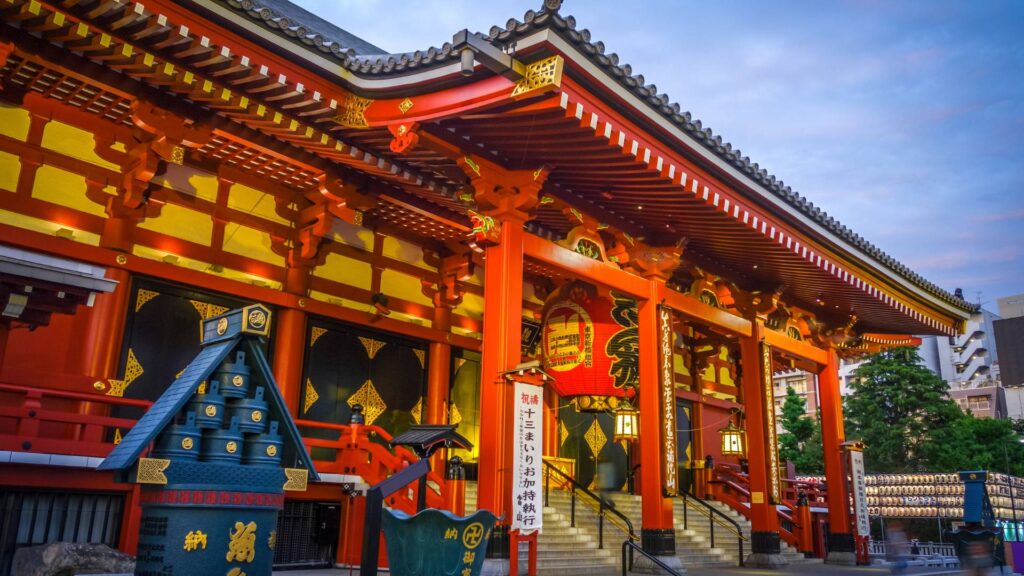
In addition to spots such as Senso-ji Temple and Zojoji Temple, we also introduce recommended shrines and temples known for their good fortune, such as for match-making, prosperous business, academic success and prayers to ward off bad luck.
Check the latest information on the official websites, opening times for Hatsumode, precautions for worshippers, lucky charms and good luck charms, and start the new year with a good feeling!
1. 浅草寺 Senso-ji Temple, Asakusa [Taito-ku, Tokyo]
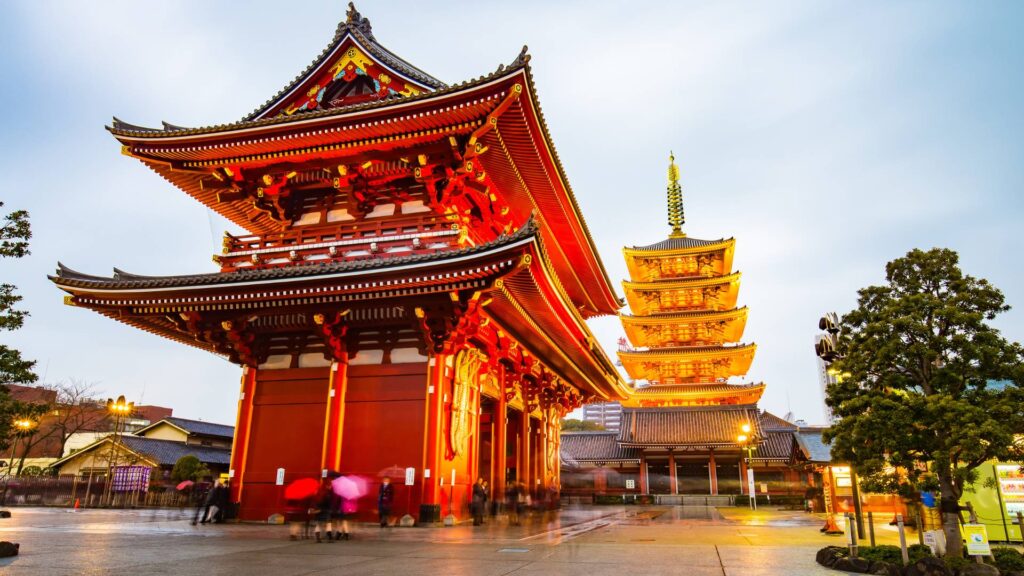
Senso-ji Temple, which enshrines the bodhisattva Sho-Kannon, is one of the oldest temples in Tokyo. The symbol of Asakusa, the Kaminarimon (Thunder Gate), has just had its large red lantern renewed in April 2020 for the first time in seven years. The presence of the bright vermilion and shiny metal fittings will lift your spirits♪
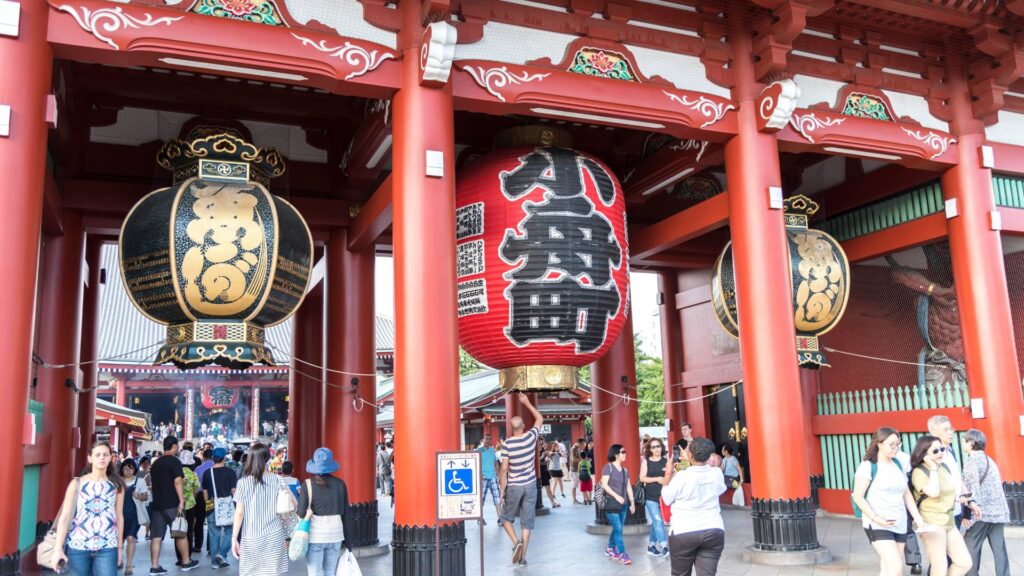
Nakamise, lined with souvenir shops and food shops, is scheduled to remain open during the Hatsumode period in 2022. Various stalls will be lined up, including Asakusa specialities and classic gourmet foods.
*Scale of shops may be reduced or cancelled depending on the current situation.
As the temple is usually very crowded with approximately 2.9 million worshippers on Sangatsu, it is recommended to visit on a weekday when the crowds are relatively small and spread out. Senso-ji Temple can be reached on foot from Senso Station, so please use public transport.
Sensoji Temple
[Address] 2-3-1 Asakusa, Taito-ku, Tokyo
[Opening hours] The opening hours during the New Year period have not yet been decided (as of October 2021), check the official website before visiting [Normal] 6am – 5pm (opening hours from 6:30am from October to March) *In addition to staggering visiting times and hours, take measures to prevent coronavirus infection, such as wearing a mask and disinfecting your hands. Please cooperate.
[Access] [Train] A short walk from Asakusa Station on the Toei Asakusa Line.
2. 東京大神宮 Tokyo Daijingu [Chiyoda-ku, Fujitomi]

The Tokyo Grand Shrine is dedicated to the deities of the Ise Jingu Shrine. It is one of the prestigious Tokyo Gosha (five shrines: Hie Shrine, Meiji Shrine, Yasukuni Shrine, Ookunitama Shrine and Tokyo Daijingu Shrine).
The shrine also enshrines the god of marriage, and as the founder of the Shinto wedding ceremony, many people visit the shrine to wish for a matchmaking ceremony and the fulfilment of their love lives.
Ema (votive picture tablet) and good luck charms are also very popular, including the ‘Enmusubi Suzuran-mamori’, which is full of good luck charms for romance!
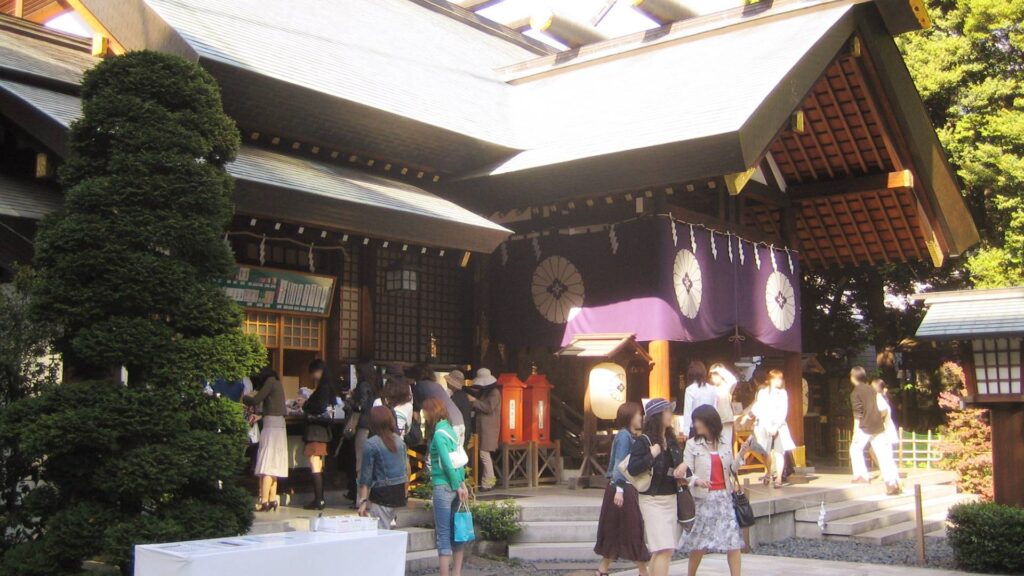
After visiting the shrine, you can look for the amulet that suits you best.
Hatsumode also attracts a large number of worshippers every year, and commemorative mini zodiac sign ema are distributed to the first 1,000 visitors on each of the three days of the New Year.
From the perspective of preventing the spread of new coronavirus infection, dispersed visits and prayers by post are also recommended. Various changes have also been made, including the use of red seals with a written note during the New Year period. It may be a good idea to pay a visit to the shrine not only on the three days of the New Year and during the pine season, but also during the New Year when things are a little calmer.
Tokyo Daijingu
[Address] 2-4-1 Fujimi, Chiyoda-ku, Tokyo
[Hours] [New Year’s Day] 0:00 – 21:00 (awarding of omifuda, amulets, red seals, etc.: 0:00 – 19:00) [From 2 Jan] 6:00 – 21:00 *Omifuda, amulets, etc.: 8:00 – 19:00 *Red seals are awarded from 8:00 – 19:00 on 2 and 3 Jan, 9:00 – 17:00 on 4 – 7 Jan, 8:00 – 17:00 on 8 – 10 Jan and from 11 Jan onwards. In addition to staggering the time of year and hours of visitation, please cooperate with measures to prevent infection of coronavirus, such as wearing masks and disinfecting your hands.
[Access] [Train] 5 min walk from Iidabashi Station on JR and underground lines.
3. 神田明神 Kanda Myojin [Sotokanda, Chiyoda-ku, Tokyo]
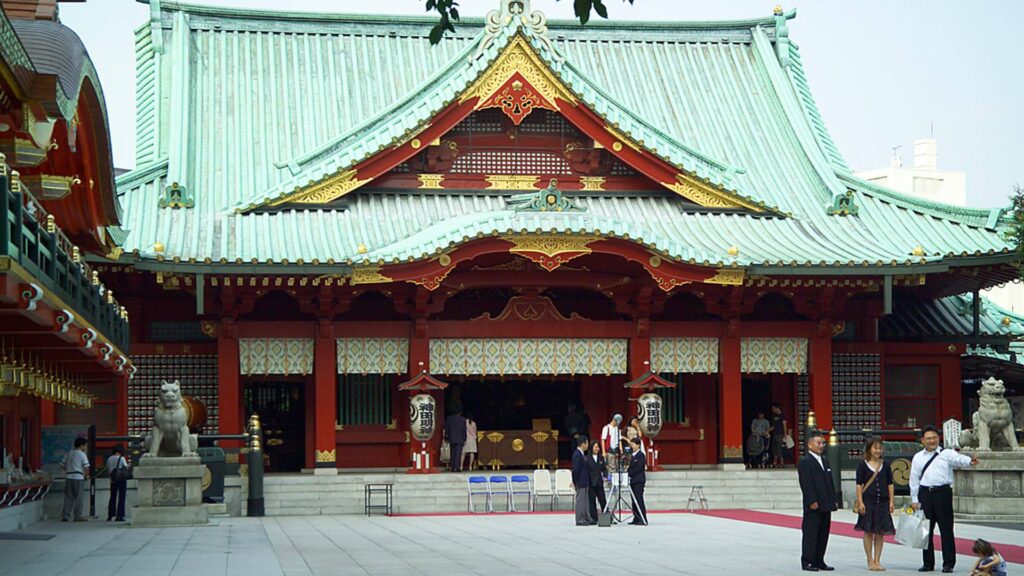
Kanda Myojin is said to have been founded in 730 by the Izumo clan’s Makanda Shin, and is revered as Edo’s chief town-guard. The Ichinomiya shrine enshrines Daikoku-sama for match-making and household safety, the Ninomiya shrine enshrines Ebisu-sama for prosperous business, medicine and health, and the Sannomiya shrine enshrines Masakado-sama for protection from disaster and bad luck and for good luck.

As the general deity of Kanda, Nihonbashi, Otemarunouchi and Akihabara, business amulets such as ‘IT information safety protection’ and ‘omamori for work’, ema and amulets in collaboration with characters are also sometimes available.
On New Year’s Day, the Teshidan Festival is held to celebrate the beginning of the year at the same time as the gates open at midnight. The shrine is usually crowded with more than 300,000 Hatsumode visitors on the three days of the year, so it is recommended to spread out the dates and times of the visits. You can also post your omudashi online.
Kanda Myojin.
[Address] 2-16-2 Sotokanda, Chiyoda-ku, Tokyo
[Hours of visitation and prayer] [1 Jan] 0:00-18:00 [2-3 Jan, 6-10 Jan] 8:00-18:00 [4 & 5 Jan] 7:00-19:00 [11-14 Jan] 9:00-18:00 [15-31 Jan] 9:00-17:00. The web pre-registration for the New Year visit in 2022 is open until 5pm on 30 November 2021 *In addition to the dispersion of visit times and times, please cooperate with measures to prevent coronavirus infection, such as wearing masks and disinfecting your hands.
[Access] [Train] 5 min walk from Ochanomizu Station (Seibashi Exit) on the JR Chuo and Sobu Lines, 5 min walk from Ochanomizu Station (Exit 1) on the Tokyo Metro Marunouchi Line [Car] 8 min from Kandabashi Exit on the Metropolitan Expressway Central Loop Route.
4. 靖国神社 Yasukuni Shrine [Kudan-kita, Chiyoda-ku, Tokyo]
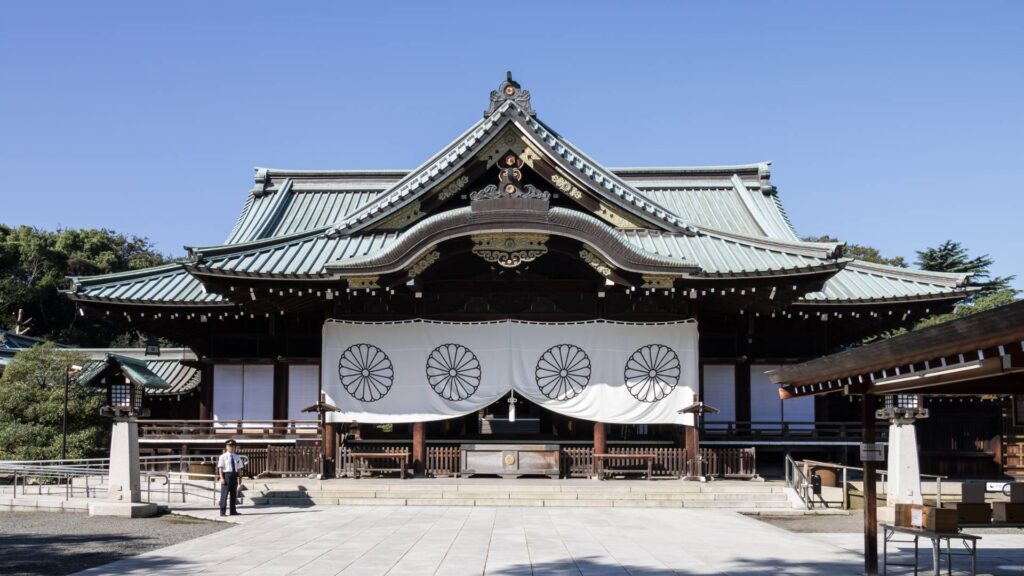
The shrine was founded in 1869 and enshrines ‘the souls of those who gave their lives for their country’ from the end of the Tokugawa Shogunate to the end of World War II. Prayers are accepted for gratitude to the gods, national security, family safety, protection from bad luck and prosperity of business.
The New Year begins with the sound of large drums. At midnight on New Year’s Day, a bonfire is lit on the approach to the shrine and a ritual offering of young water is held in the main shrine, followed by the New Year Festival, a ceremony to pray for national peace and prosperity.

The grounds of the shrine are also the scene of a lively New Year’s ceremony, with performances to celebrate the New Year and dedication ceremonies such as the New Year archery competition. The Yushukan (museum) in the precincts of the shrine displays the wills and relics of the deities as well as valuable historical documents such as the Zero fighter plane, and a dedicated New Year sword exhibition is also held, so be sure to drop by.
Yasukuni Shrine.
[Address] 3-1-1 Kudan-kita, Chiyoda-ku, Tokyo
[Visiting hours] [Honden] 23:30 on 31 December to 18:00 on 1 January and 6:00 to 18:00 on 2 and 3 January (regular hours: 6:00 to 17:00) [Yushukan] 9:00 to 16:30 (last admission at 16:00) *In addition to spreading out visiting times and hours, please cooperate with measures to prevent coronavirus infection, such as wearing a mask and disinfecting your hands and fingers.
[Fees] [Yushukan] ¥1,000 for adults, ¥500 for university students, ¥300 for high school and junior high school students, free for primary schools students and younger.
[Access] [JR] 10-minute walk from Iidabashi Station and Ichigaya Station on the Chuo and Sobu Lines [Subway] 5-minute walk from Kudanshita Station on the Tozai Line, Hanzomon Line and Toei Shinjuku Line; 10-minute walk from Iidabashi Station on the Tozai Line, Yurakucho Line and Toei Oedo Line; 10-minute walk from Ichigaya Station on the Nanboku Line, Yurakucho Line and Toei Shinjuku Line.
5. 日枝神社 Hie Shrine [Nagatacho, Chiyoda-ku].

Hie Shrine is located in Nagata-cho, a corner of the town known for the Diet Building and the Diet Members’ Building, and is protected by a forest on a hillside surrounded by lush greenery. For the Edo Shogunate, it was the ‘birth deity of the Tokugawa Rekicho’ and ‘shrine of the Edo Castle’, while the Edo people were familiar with the shrine as the ‘general clan deity of Edo Township’.
The main shrine and shrine pavilions have been rebuilt and repaired after overcoming major fires and war damage, and the well-maintained grounds are easy to visit and the shrine is revered as the ‘guardian deity of the Imperial Palace’.

As the shrine is usually crowded during the Hatsumode period, early morning Hatsumode is recommended, when the crowds are comparatively eased.
A statue of a monkey called Masaru, the messenger of the gods, is placed in the precincts of the shrine. The word ‘Masaru’ means ‘the devil goes away’ or ‘victory over everything’, and is therefore good for warding off bad luck and ensuring prosperous business.
The ‘Masaru-mamori’, a monkey charm with various meanings such as ‘match-making’ as the word for monkey can be read as ‘en’, is also very popular. It is also perfect for warding off bad luck, praying for victory and the fulfilment of a good marriage.
Hie Shrine.
[Address] 2-10-5 Nagatacho, Chiyoda-ku, Tokyo
[Visiting hours] [1 Jan] 0am-6pm [2-5 Jan] 6am-6pm [6-6 Jan onwards] 6am-5pm *In addition to staggering visiting times and hours, please cooperate with measures to prevent coronavirus infection, such as wearing a mask and disinfecting your hands.
[Access] [By train] Approx. 3 min walk from Exit 2 of Akasaka Station on the Chiyoda Line, approx. 3 min walk from Exit 7 of Tameike-sanno Station on the Subway (Namboku and Ginza Lines), approx. 5 min walk from Exit 5 of Kokkai-gijidomae Station on the Subway (Chiyoda Line), approx. 8 min walk from Exit 11 of Akasaka-mitsuke Station on the Subway (Ginza and Marunouchi Lines) [By car] From Kasumigaseki I.C. on the Metropolitan Expressway 5 min.
6. 湯島天満宮 Yushima Tenmangu Shrine [Yushima, Bunkyo-ku, Tokyo]

The shrine is dedicated to Sugawara Michizane, the ‘god of learning’, and is also known as Yushima Tenmangu Shrine. It is also one of the few shrines in Tokyo that enshrines Amano-Terikio-no-Mikoto, who is blessed as the ‘god of luck and power’, together with Michizane.
The shrine attracts many students and families from all over the country, especially from early December. The sight of people visiting the shrine to pray for academic success and success in school is a familiar sight at Hatsumode.
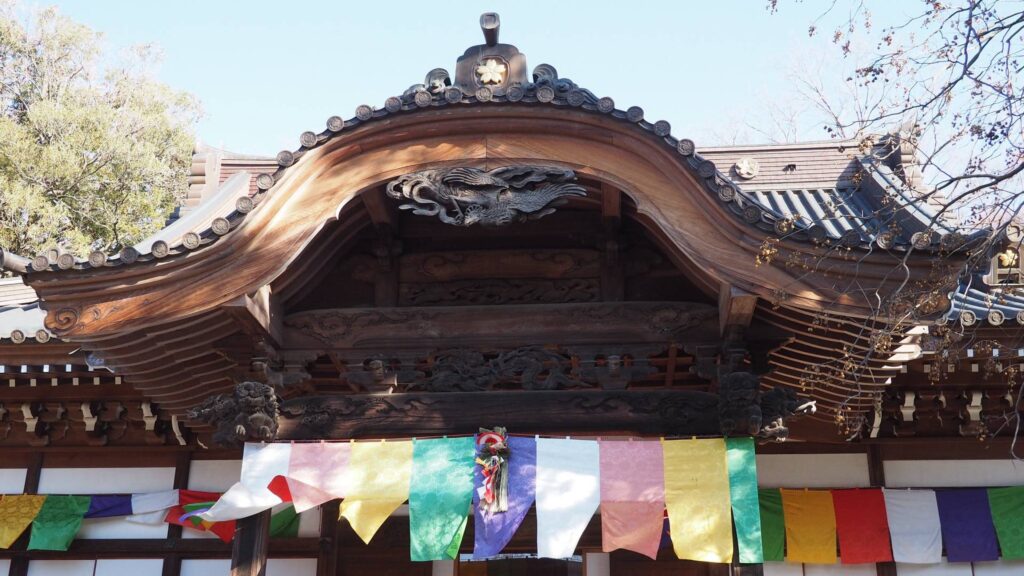
From the end of the year to New Year’s Day and during the Ume Festival (around February to March), many stalls are set up along the approach to the shrine grounds, and it is fun to look at and buy souvenirs.
Around the time of Hatsumode, it is also examination season and the three days of the month are quite crowded, so it is recommended to visit the shrine at a different time of the year. Don’t forget to pay a visit to the shrine to express your gratitude if you successfully pass the exam.
Yushima Tenmangu Shrine
[Address] 3-30-1 Yushima, Bunkyo-ku, Tokyo
[Hours of worship] [1 Jan] 0am – 9pm [2 and 3 Jan] 6am – 9pm [4 Jan and onwards] 6am – 8pm *Please check the official website for information on the awarding office counter, red seals and prayer times *In addition to spreading out the times and periods of worship, please cooperate with measures to prevent coronavirus infection such as wearing a mask and sanitising your hands and fingers.
[Access] [Train] Approx. 2 min walk from Exit 3 of Yushima Station on the Subway Chiyoda Line, approx. 8 min walk from Ueno-hirokoji Station on the Subway Ginza Line or Hongo-sanchome Station on the Marunouchi Line, approx. 10 min walk from Ueno-okachimachi Station or Hongo-sanchome Station on the Subway Oedo Line, approx. 10 min walk from JR Okachimachi Station.
7. 深大寺 Jindaiji Temple [Jindaiji Motomachi, Chofu City]

Located in an area rich in nature that reflects the four seasons of Musashino, Jindai-ji Temple is a popular place of rest and relaxation for the people of Tokyo. Jindaiji Temple is an ancient temple founded in 733, and has long been famous as a sacred place for matchmaking due to the legend of love in its auspiciousness.
The main image of Gensan Daishi in Gansan Daishi Hall is the largest portrait sculpture in Japan and is a Tokyo-designated Tangible Cultural Property, a secret Buddha. The Shaka Nyorai statue, a national treasure from the Hakuho period (late 7th/early 8th century), and other valuable Buddhist statues can be viewed in the Shaka Hall.
On New Year’s Eve, the temple usually attracts around 200,000 worshippers on the first three days of the New Year, when the temple bell rings and all the monks perform Goma prayers (Jyoshikai Daima Goma Ku).
Jindaiji Temple
[Address] 5-15-1 Jindaiji Motomachi, Chofu City, Tokyo
[Hours of visit] [New Year’s Eve and New Year’s Day] from midnight to 20:30 on 1 January (Shaka Nyorai is not open during the New Year period) [2 and 3 January] 9am to 7:30pm [Regular period] 9am to 5pm *In addition to spreading out the time and period of visit, please cooperate with measures to prevent coronavirus infection, including wearing a mask and disinfecting your hands and fingers.
[Fees] Admission to the National Treasure Shaka Nyorai Statue [High school students and older]: 300 yen.
[Access] [Bus] 15 mins from Tsutsujigaoka Station on the Keio Line, 15 mins from Chofu Station on the Keio Line, 30 mins from JR Kichijoji Station, 25 mins from JR Mitaka Station [Car] 5-10 mins from Chofu IC on the Chuo Expressway.
8. 大國魂神社 Okunitama Shrine [Miyamachi, Fuchu City]

With a history of approximately 1,900 years, the shrine was formerly known as Musashi Soja Rokushomiya. It enshrines the guardian deities of Musashi Province and is said to have worshippers all over the Kanto region as the head shrine of Musashi Province.
The main deity, Okunitama Ookunitama, is said to be the same deity as Okuninushi in Izumo, who gave people food, clothing and shelter, medicine and the art of witchcraft. The deity has a wide range of benefits, but in recent years has been revered as a deity for warding off bad luck and for marriage.

The Hatsumode shrine is usually very crowded with 500,000 visitors every year, and information on events and stalls for Hatsumode visitors in 2021 will be announced on the official website by the end of November 2021.
Ookunitama-jinja Shrine.
[Address] 3-1 Miyamachi, Fuchu-shi, Tokyo
[Opening hours] [Sangatsu] 0:00-21:00 on 1 Jan, 6:30-20:00 on 2 Jan, 6:30-19:00 on 3 Jan [15 Sept-31 Mar] 6:30-17:00 [1 Apr-14 Sep] 6:00-18:00 *In addition to staggering times and hours of worship, please cooperate with measures to prevent coronavirus infection, including wearing a mask and sanitising your hands. Please cooperate with prevention measures such as wearing masks and disinfecting hands.
[Fees] [Entrance fee to the Treasure House] 200 yen per person.
[Access] [By train] Approx. 5 min. walk from Fuchu Honmachi Stn. on the JR Musashino and Nambu Lines and Fuchu Stn. on the Keio Line [By car] Approx. 10 min. from Inagi IC (from the direction of Shinjuku), 10 min. from Fuchu Smart IC (from the direction of Hachioji).
9. 高尾山薬王院 Takao Yakuoin Temple [Takao-cho, Hachioji City].

Get away from the hustle and bustle of the city centre and worship the sunrise with the monks in the rich natural surroundings of Mount Takao.
Why not welcome the New Year on Mount Takao? Surrounded by nature so rich that it is hard to believe you are in the city!
On New Year’s Eve, the Takao Ascent Cable Car operates all night and many visitors walk along the approach lined with Kasuga lanterns to Yakuoin Temple. At midnight, the New Year’s Eve bell rings at Yakuoin, and the solemn sound of the bell echoes throughout Mt Takao.
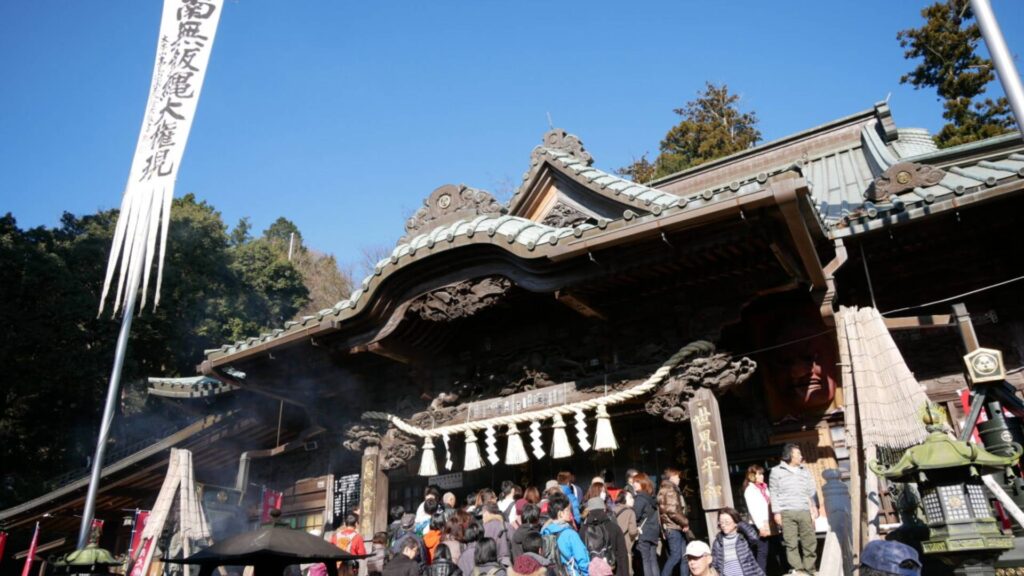
On New Year’s morning, the Yakuoin temple grounds are the site of the ‘Geikosai’ event, where the first sunrise of the new year is celebrated and visitors can join the monks in viewing the rising sun. In addition, the New Year’s Hatsumode Daigomamo service is held in the main hall of Yakuoin, making it even more sacred.
There are also a variety of gifts, such as tengu fans and tengu good luck charms, which are typical of Mt Takao, the home of tengu, to pray for family safety and disaster prevention.
Takao Yakuoin Temple
[Address] 2177 Takao-cho, Hachioji-shi, Tokyo
[Visiting hours] [New Year’s Eve to New Year’s Day] 0:00 – 16:00 [Regular season] 8:30 – 16:00 *Please cooperate in preventing coronavirus infection by wearing masks and disinfecting your hands, in addition to spreading out the visiting period and hours.
[Access] [By train or cable car] [By train or cable car] Get off at Takaoyamaguchi Station on the Keio Takao Line, then get off at Takaozan Cable Takao Station and walk 20 minutes [By car] Approx. 3 minutes from the Takaozan IC.
10. 西新井大師 Nishi-Arai Daishi Soji-ji Temple [Adachi-ku, Nishi-Arai]

Gochisan Henshoin Soji-ji Temple is said to have been founded by Kobo Daishi in 826. It is a temple of the Toyozan school of Shingon Buddhism.
In the 800s, when a prayer was offered to save villagers suffering from a plague epidemic, clear water gushed from a dry well and the illness was quickly cured. The temple is known as a sacred site for ‘fire prevention’ and ‘good luck against bad luck’.

The main hall opens at midnight on New Year’s Day. During the Hatsumode period, the shops along the approach to the temple are busy and there are stalls in the precincts, creating a New Year’s mood.
The Hatsu Daishi festival, held on 21 January every year, is also recommended if you want to pray for good health in the new year. Be prepared for the cold and pray for good fortune in the New Year.
Nishiarai Daishi Soji-ji Temple
[Address] 1-15-1, Nishiarai, Adachi-ku, Tokyo
[New Year’s Eve: 6am – all night in the temple grounds, 8am – 3pm in the main hall, no good luck charms awarded [New Year’s Eve]: eve – 24pm in the temple grounds, 0am – 10pm in the main hall and good luck charms awarded [2 & 3 Jan]: 6am – 11pm in the temple grounds, 8am – 10pm in the main hall and good luck charms awarded [21 Jan]: 6am – 8pm in the temple grounds, 6am – 7pm in the main hall. In addition to staggering the times and times of visit, please cooperate with measures to prevent infection of coronavirus, such as wearing masks and disinfecting your hands and fingers.
[Fees] [Goma Prayer] From ¥5,000 (suspended on 30 and 31 Dec).
[Access] [By train] 5 min walk from Daishimae Stn. on the Tobu Daishi Line [By car] 15 min from Metropolitan Expressway Kahira I.C. or Ogi-ohashi I.C.
11. 代々木八幡宮 Yoyogi-Hachimangu shrine [Yoyogi, Shibuya-ku].

Yoyogi Hachimangu Shrine has a rich history in Shibuya, with the remains of a reconstructed Jomon-era dwelling in its densely wooded grounds. It was built in the Kamakura period (1185-1333) and the main deity is the Emperor Ojin.
In ancient times, the shrine was revered by the Imperial Court and samurai families, and has been worshipped as a deity of ‘good fortune’, ‘business prosperity’, and ‘development and protection of industry and culture’.

It is also known for various benefits such as ‘safe childbirth’, ‘child rearing’, ‘domestic safety’ and ‘travel safety (traffic safety)’, based on the myth of Empress Jingu.
In addition to New Year prayers at the beginning of the workday at the office, general (individual) ascending prayers (New Year prayers) are also held from 0.00 am on 1 January. Prayers can be made 24 hours a day, so it is recommended for those who wish to visit at night or early in the morning to avoid the crowds.
■Yoyogi Hachimangu Shrine.
[Address] 5-1-1 Yoyogi, Shibuya-ku, Tokyo
[Hours of visitation] 24 hours a day, 7 days a week *Gifts are available from 8am to 6pm on Sangatsu (three days a week) and from 9am to 5pm during normal periods *Please cooperate with measures to prevent infection of coronavirus, such as wearing a mask and disinfecting your hands, in addition to spreading out the time and period of visitation.
[Access] [Train] Odakyu Line Yoyogi-Hachiman Station, Tokyo Metro Chiyoda Line Yoyogi-Koen Station 5 min walk.
12. Zojoji Temple [Shiba Koen, Minato-ku, Tokyo

Zojoji Temple, one of the seven head temples of the Jodo Sect and the centre of Jodo Sect teaching in the Kanto region, has a 600-year history dating back to its foundation in 1393 and is known as a temple dedicated to the secret statue of Kurohonzon, the Black Buddha of Shounen, associated with Ieyasu Tokugawa, and for the sight of Zojoji Temple and Tokyo Tower.
On New Year’s Eve, the temple grounds are filled with a solemn atmosphere as the temple bell rings. Reflect on the year gone by and pray for a wonderful new year.
The New Year’s Eve and New Year’s Eve crowds are approximately 100,000 every year, and crowds are expected to continue in 2021. It is a good idea to visit the shrine on New Year’s Eve or New Year’s Day when the shrine is relatively empty, rather than during the three days of the New Year or during the pine season.
Zojoji Temple.
[Address] 4-7-35 Shiba-Koen, Minato-ku, Tokyo
[Hours] [31 Dec] All day [1 Jan] 0am-6pm [2 Jan-3 Jan] 8am-5pm [Normal period] 9am-5pm *Food stalls will not be open on Hatsumode in 2021 *In addition to spreading out the time and date of visit, please cooperate with measures to prevent coronavirus infection, including wearing a mask and sanitising your hands.
[Access] [Train] Approx. 3 min walk from Onarimon Stn. or Shibakoen Stn. on the Toei Subway Mita Line, 5 min walk from Daimon Stn. on the Toei Subway Asakusa Line and Oedo Line, 10 min walk from JR and Tokyo Monorail Hamamatsu-cho.
—
Hopefully this list has given you a insight into the most popular holiday in Japan! This time of year is very busy so be please be careful, but also take the opportunity to try lots of festive food and activities. Will you be participating in Hatsumode this year? Which shrines will you be visiting? let us know down below!

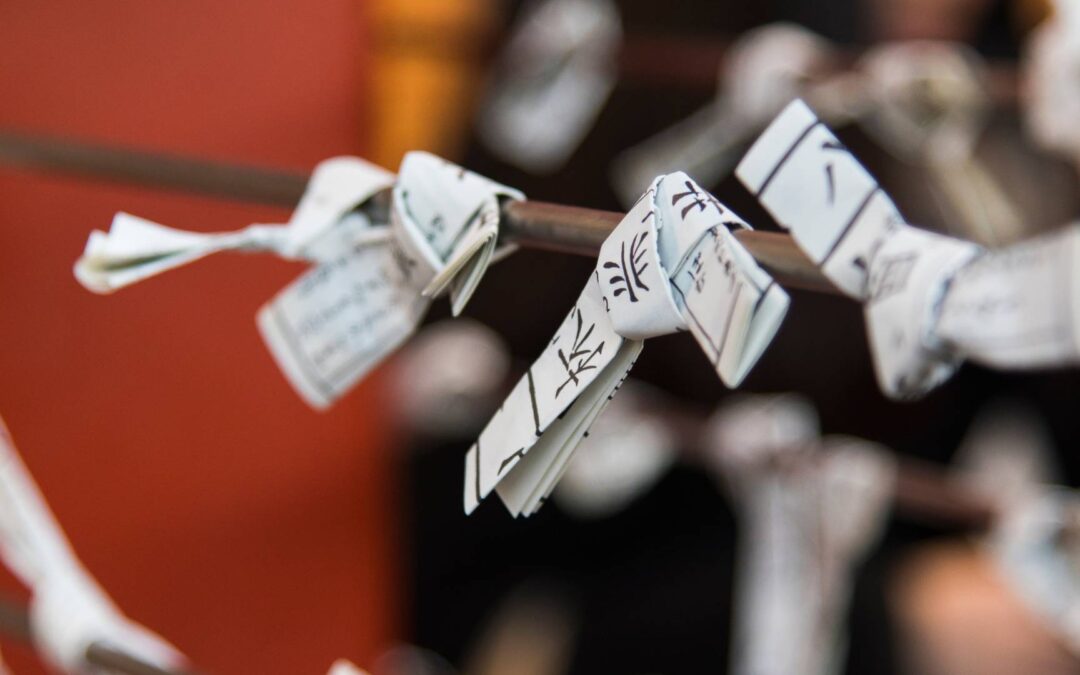
Recent Comments